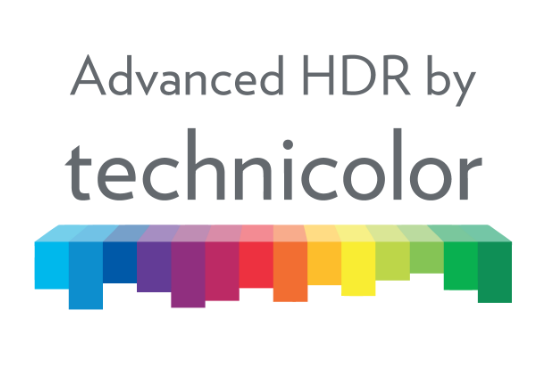SINGAPORE - June 8, 2023 - PRLog -- CommunicAsia/Broadcast Asia – Adoption of high dynamic range (HDR) technology is poised to take a different and more dynamic path to market-wide implementation in Asia compared to North America and Europe, according to Rick Dumont, Head of Business Development for Wireless and HDR, Philips.
"It is," he explains, "a market that is in many ways less encumbered by legacy infrastructures that have created challenges in other markets. Asia is also a region driven by a young demographic market demanding more immersive experiences."
As a result, the entertainment technology ecosystem of content creators, broadcasters, streaming service providers and consumer device manufacturers – including TVs and mobile devices – is taking a hard look at the opportunities that HDR creates to establish competitive differentiation over the next few years before it becomes a competitive requirement by the end of the decade.
On the video content distribution front, broadcasting and streaming services are evolving with HDR on separate but parallel tracks. While the market remains most mature in the United States, thanks largely to the fact that HDR technologies in general – and Advanced HDR by Technicolor in particular – have been incorporated into the ATSC 3.0 standard, there is growing evidence of strong interest and implementation among digital content distributors across the Asia Pacific region.
"In China, for example, HDR is not included in the country's broadcasting standards, but there is a strong focus on supporting HDR technologies among over-the-top (OTT) service providers," says Dumont.
Ecosystem Collaboration and Coordination in Region Critical to Success
This is significant because service providers set the example and raise consumer expectations about how content should be transmitted and consumed. What's more, service providers are collaborating with other elements of the entertainment technology value chain to leverage their position in the market by providing customer premises equipment (CPE) – like set-top boxes – and consumer electronics (CE) solutions – including dongles or connected TVs (CTVs) that enable and support HDR.
"It is essential that ecosystem collaboration continue to gain momentum around HDR to accelerate adoption and deliver the full promise of this technology to consumers across the region. The successful implementation of HDR requires the cooperation of system-on-chip manufacturers, TV and device manufacturers, content distributors, and content owners. The industry as a whole cannot simply focus on whether a TV brand supports an HDR format. It truly is an end-to-end game," he explains.
For broadcasters and streaming service providers across Asia, HDR also offers an opportunity to build on the highly regarded value delivered in presenting live events.
"Consumers in the region are among the most avid sports and popular music fans in the world. Live sports content such as the World Cup, the English Premier League and Formula 1 are popular with audiences in China, South Korea and Japan. It will be important for network service operators – including cable and telco companies – as well as pay-TV players – to deliver these live sports events in the highest possible image quality, which today requires HDR technology," says Dumont.
HDR's Implementation for Mobile Phones
Growing consumer expectations for premium viewing experiences are not limited to the traditional living room environment. Consumers also recognize HDR as a desirable feature on personal devices such as mobile phones and tablets.
"Compared to audiences in Europe and North America, audiences in the Asia Pacific region consume more media on mobile devices than they do on TVs. In many remote regions, access to wired data can be limited and sometimes nonexistent. As a result, wireless services delivered over cellular networks represent the main source of video content delivery," says Dumont.
These consumers expect – and deserve – access to high-quality experiences. Consequently, mobile operators and over-the-top content providers that make HDR content available have an opportunity to improve engagement and protect and enhance critical revenue streams.
Delivering HDR Content Efficiently and Cost-Effectively
The good news, says Dumont, is that recent developments in HDR have laid the foundation for the entire ecosystem to provide premium experiences to TVs and mobile devices in a technically efficient and cost-effective manner. This is especially true for those embracing Advanced HDR by Technicolor.
Advanced HDR by Technicolor – a collaboration between Philips, InterDigital and Technicolor – is a suite of HDR production, distribution and display solutions that leverages machine learning (ML) technology to maximize image quality and enhance the consumer viewing experience. There are two major components to Advanced HDR by Technicolor.
The Intelligent Tone Management (ITM) tool provides a dynamic, tunable, real-time solution to up-convert SDR content to HDR with complete freedom and flexibility to manage contrast, brightness and color saturation.
Its Single Layer HDR (SL-HDR) is a dynamic and tunable real-time tool that implements ETSI SL-HDR standards to generate and deliver a consistent, high-quality broadcast stream. SL-HDR1 transforms HDR input streams into SDR-plus-metadata streams. SL-HDR compatible receivers provide consumers with high-quality HDR images that can be adapted to optimize the display capabilities of their devices.
Broadcasters and OTT distributors can reduce the cost and complexity associated with SDR and HDR distribution and management while improving the viewing experience because Advanced HDR by Technicolor automatically optimizes each image to the maximum capability of the receiving device.
"We are working with the entertainment technology ecosystem across Asia to align our technology development roadmaps with the requirements of SoC manufacturers, TV makers as well as content owners, and distributors so that technologies and value propositions offered by each of these key organizations are integrated to upconvert existing SDR content to HDR while opening the door to native-HDR content for consumers across the region."
###
Editorial Note: To learn more about Advanced HDR by Technicolor, please visit: www.advancedhdrbytechnicolor.com
Photos: (Click photo to enlarge)


Read Full Story - Coordination Among Chip Makers, Consumer Electronic Manufacturers, Service Providers and Content Developers Key to Accelerating HDR Adoption in Asia | More news from this source
Press release distribution by PRLog





